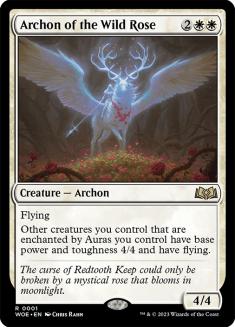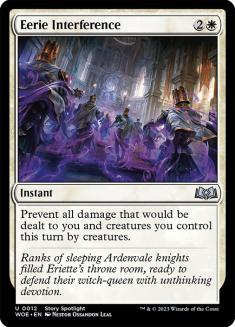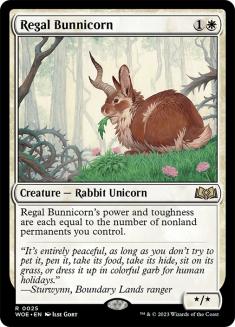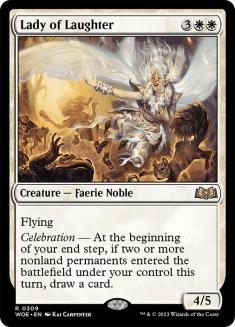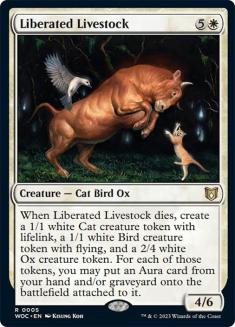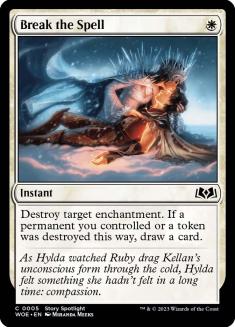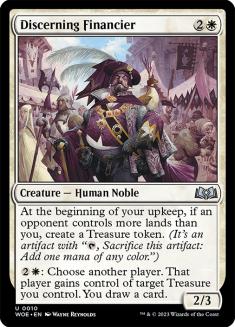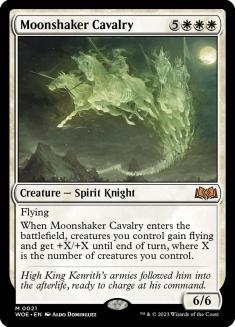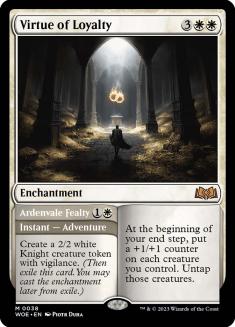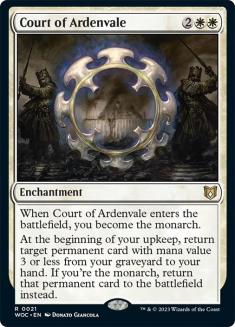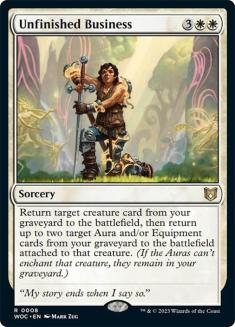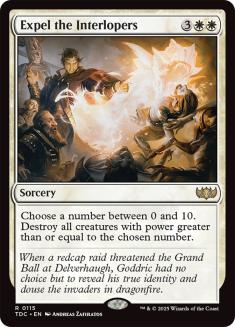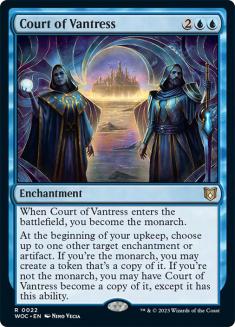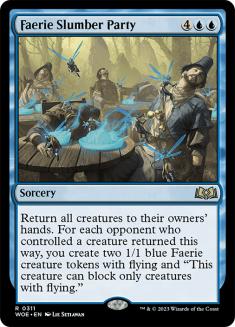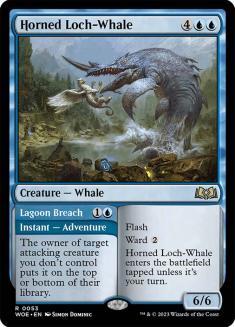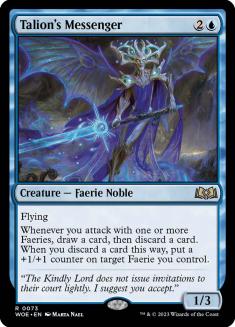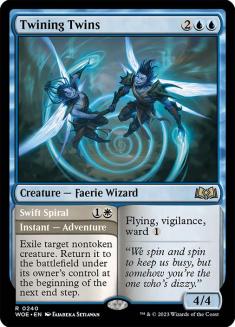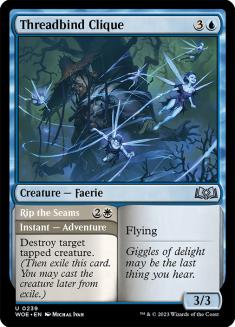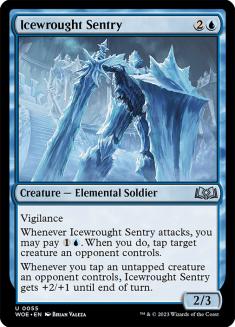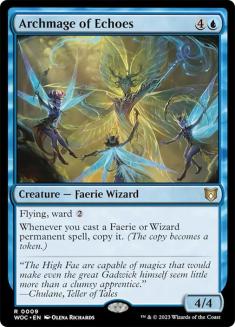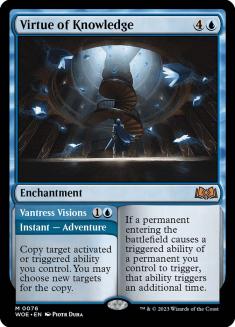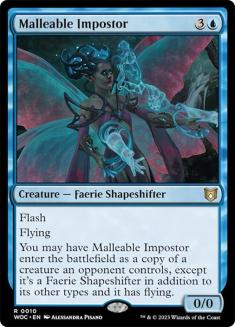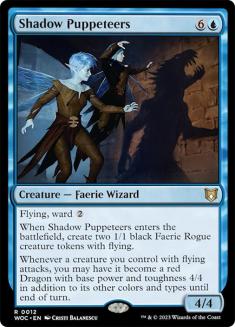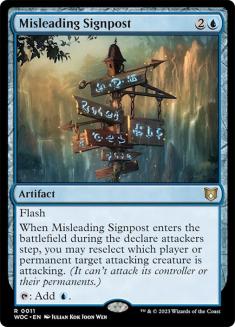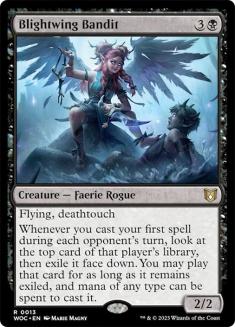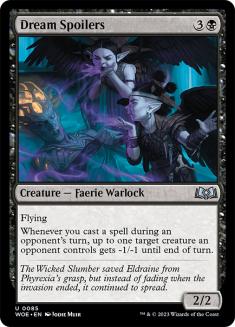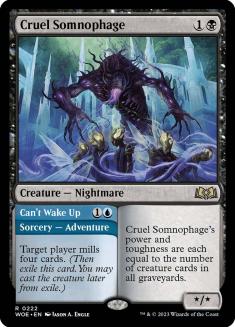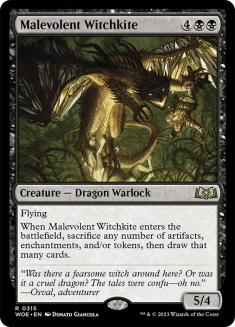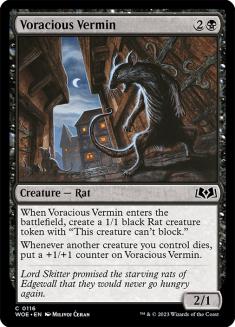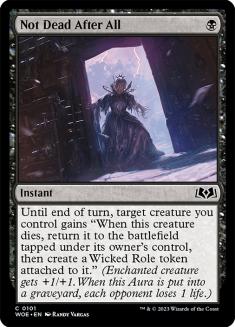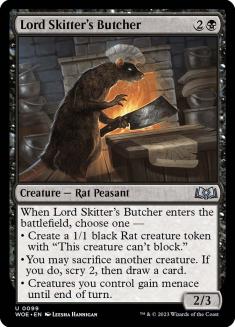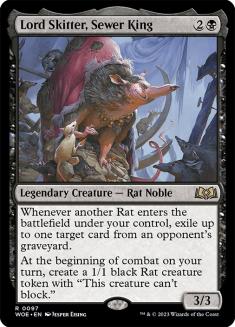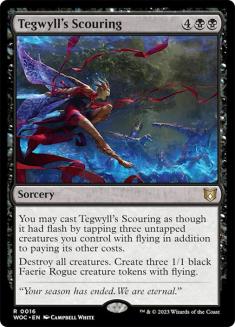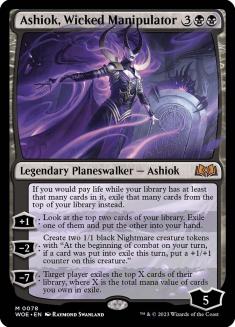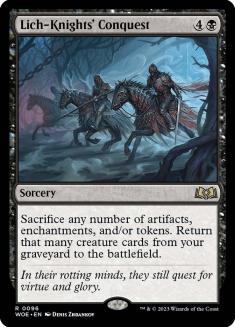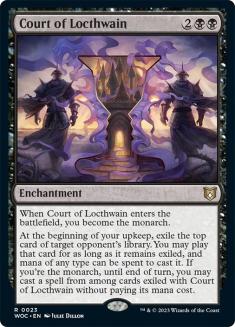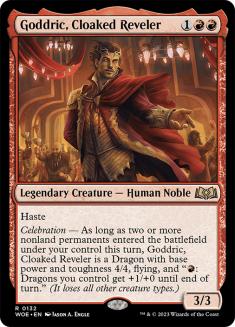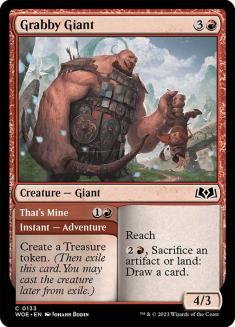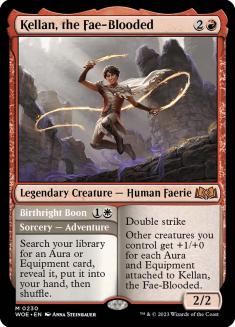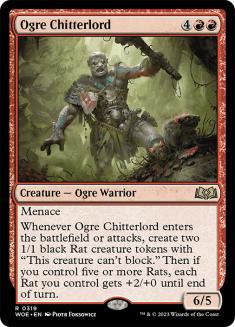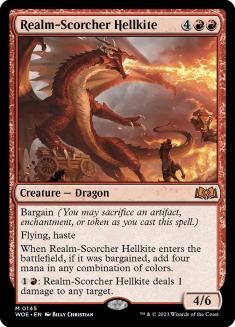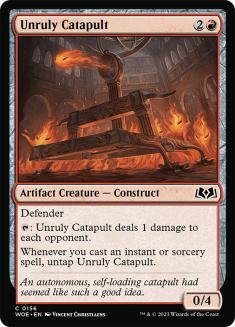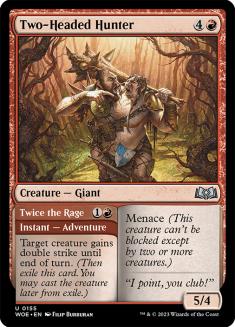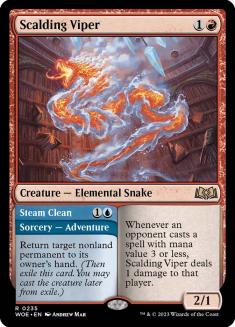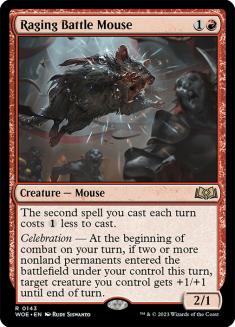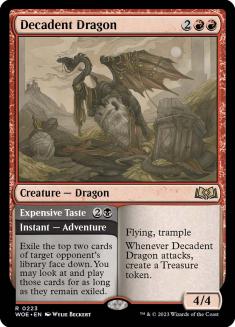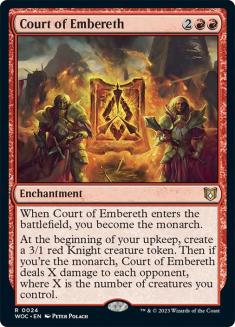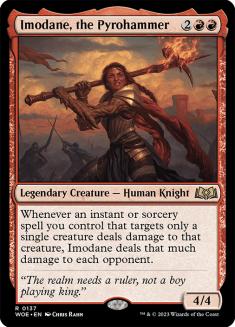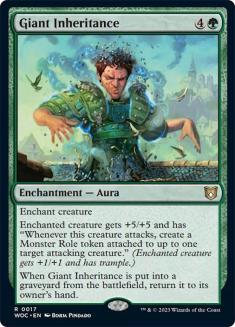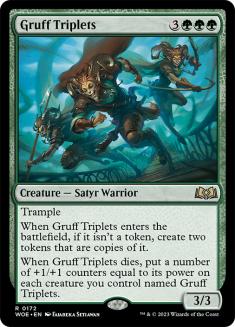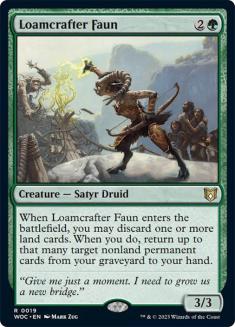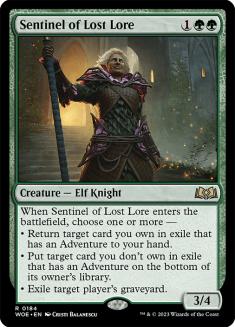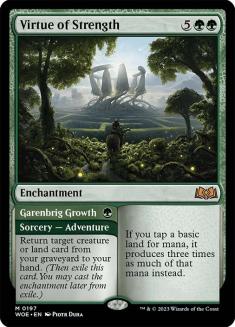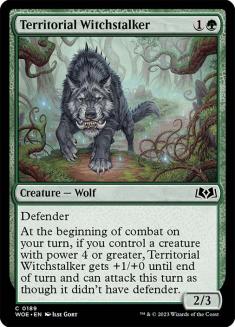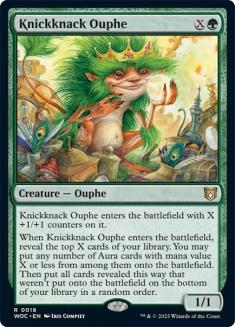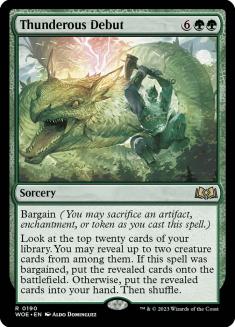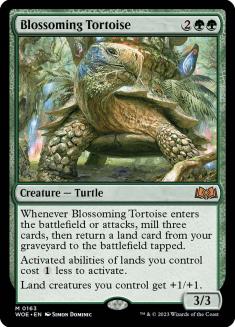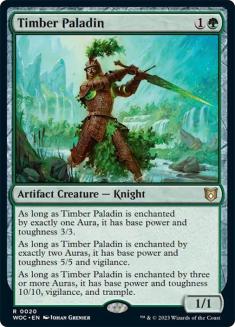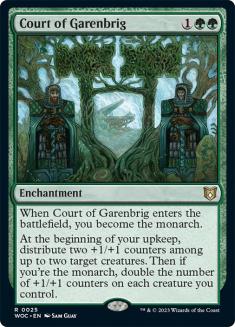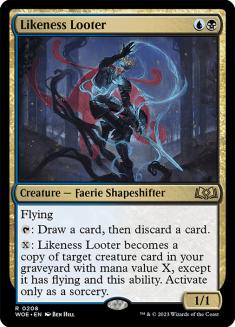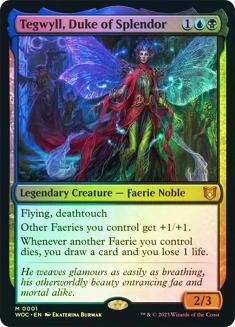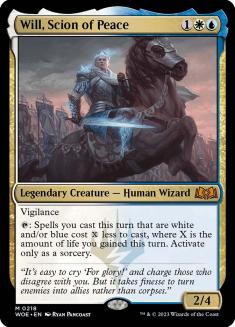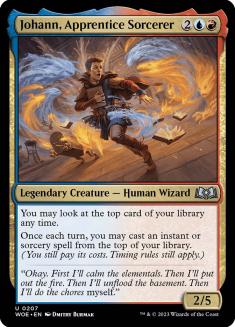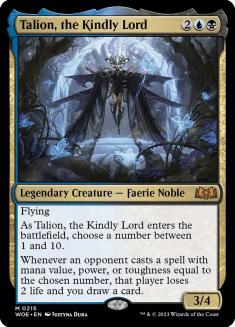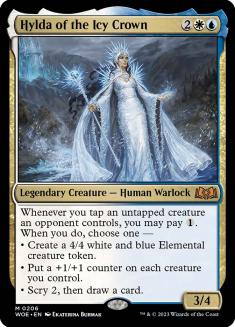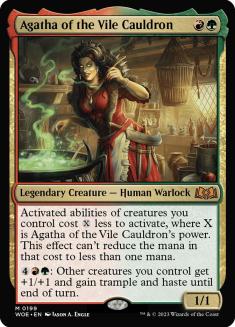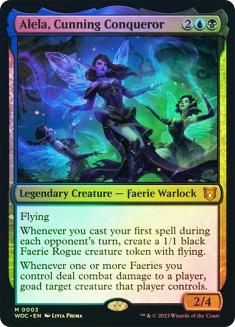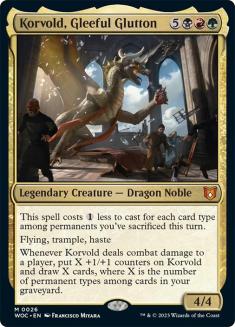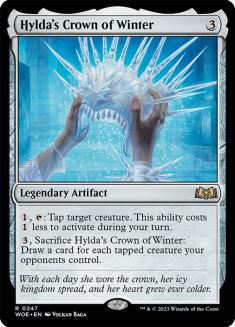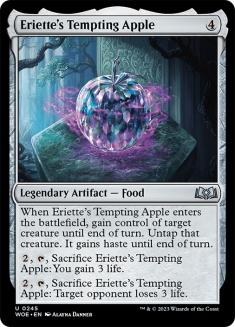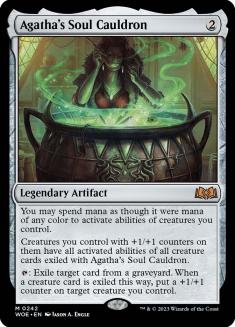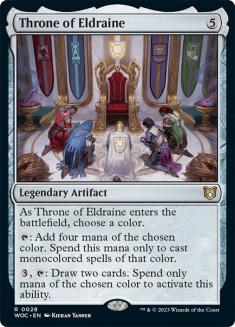A new set is out in the (literal) wild, and it’s time to check it out. Wilds of Eldraine Prereleases have started, and you now have cards in your hands. You’re ready to jam them into your existing decks and create new ones, based on either a card theme or a particular commander. It’s the time in the release cycle that we have the most fun—the fun of discovery.
We’re going to take a look at the whole Wilds of Eldraine set, which includes Wilds of Eldraine Commander. I’ll offer my opinion on the Top 5 cards in each color and a few Honorable Mentions, as well as my favorite common and uncommon (no already on the Top 5 list). I’ll also rate the color based on the quality of the cards and the density of very good ones. Let’s tuck right in.
White
Honorable Mention
Favorite Common
Favorite Uncommon
Top 5
I’ve heard some folks call Moonshaker Cavalry an improved Craterhoof Behemoth. I’m not willing to go that far, since I find trample more deadly than flying. Still, giving all or a significant portion of the team flying is going to wreck some life totals pretty quickly. When you see Moonshaker Cavalry hit the battlefield, you know you’re in the chainsaw phase of the game.
Getting the counters at the beginning of our end step is huge. We don’t need to wait around a turn for anything. Untapping our creatures is also immense, providing some defense to go with the offense we just laid on someone.
There’s a significant difference between putting the card on the battlefield and putting it in our hand, so we’ll really want to pay attention to whether or not we want to hang onto the crown or not. We’ll have to ask if the extra card worth the damage we’ll likely take.
Obviously a later-game card, Unfinished business looks like a pretty big swing/recovery vector. If there’s been a battlefield sweeper, then we’ll likely start on top of the heap, with our best creature and two best modifications.
I love the flexibility and potential political play that goes with Expel the Interlopers. It’ll find its way into my Mardu Second Breakfast deck starring Alesha, Who Smiles at Death, since most of the creatures are small. We can set the gate right where our Halfling friends can slip under it.
Grade: A. Excellent density, especially among the commons and uncommons. Good stuff in the rares; nothing with that much of an OMG factor, but enough of them that are really good to warrant a top grade.
Blue
Honorable Mention
Favorite Common
Favorite Uncommon
Top 5
We obviously don’t want copies of legendary creatures, but notice that the triggered ability is mandatory. There’s no “you may,” so if we’re at two life and Archmage of Echoes is on the battlefield, and our opponent has Suture Priest, we must cast the copy after the trigger resolves. Here’s hoping you never find yourself in that weird situation.
The Adventure is great and fun; the power is in the enchantment. Getting an additional trigger every time a permanent enters the battlefield (and causes something else to trigger) is powerful stuff indeed. It’s positively Praetor-level.
Despite the limitation of only being able to copy an opponent’s creatures, having flash more than makes up for it (and yes, play more Stunt Double, folks).
I was about to dismiss the second ability until I realized that it’s an attack trigger, not a combat damage one. This means our opponents can’t prevent the growth from 1/1 to 4/4. It doesn’t take long beating down with those to have some real impact on life totals.
Easily in the running for my favorite card in the set. We have a three-mana rock that does something else. Extra. Epic. Switching up stuff during combat excites me to no end. I understand why we don’t (it can get really complicated), but I’d love to see more cards working in the space that Misleading Signpost does. It doesn’t need to be wholesale combat-swapping, just manipulating an attacker or two. The play I’ll want to make with Misleading Signpost is to have a way to blink it each combat.
Grade: A-. Nearly as good as white, but the top cards didn’t quite pop the way their white friends did. Solid enough density all around.
Black
Honorable Mention
Favorite Common
Favorite Uncommon
Top 5
The graveyard control itself would be worth playing Lord Skitter (and check out how you’re protected from nerfing your own graveyard). Lord Skitter is a command zone-level talent, so you’ll see it scurrying around tables near you.
Okay, maybe the price is a little high and requirements sometimes awkward to fulfil. After that, it’s about the tempo of casting it as an instant so that we can then have our resources free and ready to go on our own main phases.
You’re not accidentally putting Ashiok into your deck, so you know how to be careful with replacement effects. Ashiok follows in the traditional of K’rrik, Son of Yawgmoth and Bolas’s Citadel in getting us piles of mana in exchange for life. The -2 ability is slightly more interesting because the creatures can get larger. The -7 will kill one person, then two more very, very slowly.
The operative word on Lich-Knights’ Conquest is tokens. If it’s not there, this becomes a disregarded card. Because tokens are so easy and inexpensive (in game terms) to create, Lich-Knights’ Conquest becomes a real threat card. It is without a doubt going to swing games. I look forward to playing it soon.
There are a number of particular mechanics making appearances in this set. The Gonti-like ability is one of my favorites. Adding the monarch mechanic to it all puts this ride into overdrive, then jammed into turbo by casting it without paying its mana cost.
Grade: A. Once again, we have strong top cards and enough of them to battle for those high slots. There are also lots of playable commons and uncommons vying for spots in our decks. We’re going to see quite some representation from black coming out of Wilds of Eldraine.
Red
Honorable Mention
Favorite Common
Favorite Uncommon
Top 5
The Adventure is generally a nice play for the early game, leading right into some damage with the Snake. I’m fond of passive benefits happening in my Commander games. If I’ve paid the cost for something once and it keeps returning something nice to me at no charge every turn, I believe I’ve created some value.
The mana reduction of spells is worth it. It won’t matter most of the time, but when it does, it really does. We’ll see how well the second one works. I suspect that one mana rock/one creature or two creatures will get things going with the celebration ability, but it’s not worth that much if one or both that triggered with the ability don’t have haste.
The Gonti, Lord of Luxury-like ability is always cool, so putting it on our Decadent Dragon is a nice bonus. Making a Treasure every time the Decadent Dragon attacks is similarly pleasant. They go together in a very solid package.
All I can see is finger guns and “pew, pew” sounds. That said, Court of Embereth is going to deal out lots of damage. I’m there for it.
Love the extra damage that Imodane dishes out. Note that Imodane’s ability deals all the damage that the source deals, not excess damage. Getting damage multipliers into the mix, like Dictate of the Twin Gods, Furnace of Rath, City on Fire, or Fiery Emancipation, gets the motors really running.
Grade: C. Pretty average. The top spots are good but not great and the density is nothing to write home about.
Green
Honorable Mention
Favorite Common
Favorite Uncommon
Top 5
The Knickknack Ouphe can get kind of large and get a few nice Auras to boot. Colossification anyone? How about Eldrazi Conscription? The X is going to have to be large to be significant, especially since proliferation isn’t the best option in this +1/+1 counters deck.
We’re not going to invest eight mana only to get stuff into our hand. Something is getting sacrificed. Two cards out of the top twenty isn’t much compared to where the obvious comparison will go, namely Tooth and Nail. Still, it’s correctly costed for the current world we live in.
The triggered and attack abilities are going to turn into some land ramp, especially since we’re milling cards. We get to put back any land, not just basics. Having the activated abilities of lands cost one less is outstanding. I’m not the biggest fan of the land creature because I don’t want my manabase sniped at. I’d rather spend the mana and be a little safer.
Reminiscent of Jetmir, Nexus of Revels, Timber Paladin rewards us with up to three successive Auras. With the third one, its base power and toughness becomes 10/10 and it has vigilance and trample (plus whatever the Auras give it). These kinds of “upgrading” creatures are an excellent design choice and a cool way to explore some compelling space. I encourage our friends in Studio X to keep it up.
I’d be tempted to play Court of Garenbrig without the monarch attached to it. As it is, the possibility of doubling up the +1/+1 counters on all our creatures rockets it into the stratosphere. We’re likely playing it in a deck like this, or maybe this, fully taking advantage of the card by it enhancing what we’re already doing. Better yet, it does its thing for no mana once we’ve initially cast the card.
Grade: B+. Slides down just a little bit due to the low density of threats. The highest-end stuff is okay, but there isn’t that thing that green usually has—namely, something that makes you go, “Oh, they really did that!!!”
Multicolored
Honorable Mention
Favorite Uncommon
Top 5
Another spell with some gamesmanship tied into it, Talion is another example of the game-within-a-game that I enjoy. The folks over at the Command Zone have figured out the most optimal number. (Here’s the link. TLDR: two is their answer.)
I was medium on Hylda until I realized that the second mode puts a counter on each creature we control. We’ll more likely choose the scry/draw mode, but there are certainly times when buffing the whole team makes sense.
3. Agatha of the Vile Cauldron
A nice effective mana creator, Agatha is ready to help out other creatures right away. We’ll want to buff her up in order to more efficiently buff up everyone else, but more than four to six isn’t necessary unless we’re doing something super-greedy. Seems like adding Agatha to a deck led by Halana and Alena, Partners makes some sense.
This version of Alela pushes us into Faeries, probably led by Oona, Queen of the Fae, but that’s hardly a sin. It gives us Notorious Throng, Grand Architect, and much, much more.
Ir’s a little pricey, even if we’re sacrificing a few things, but once we get online, new Korvold is a house. If it starts swinging and dealing out combat damage, people will get dead fast. It’s a cool idea design-wise to put counters on the card based on the number of permanent types in our graveyard. It doesn’t continue to spiral upward out of control, like it would with power.
Grade: A. Top-shelf stuff all the way around.
Artifact, Land, Colorless
Top 5
Hylda’s Crown has two separate abilities, each of them simple and straightforward. Tapping down creatures is the one we’ll use the most. Sacrificing the Crown to draw cards is the other, which is dependent on the number of tapped creatures our opponents control.
I don’t know how much I’ll count on Syr Ginger getting trample, hexproof, and haste, since my local environment isn’t all that fond of planeswalkers. The second triggered ability, which puts a +1/+1 counter on Syr Ginger every time an artifact is put into a graveyard from the battlefield, is quite valuable. We might be motivated to give trample to Syr Ginger in some other fashion.
A card that we’ll need to build around a little, Eriette’s Tempting Apple gives us the joy of some creature control. We’ll play it in a deck that borrows creatures (and maybe other permanents) and has some sacrifice outlets so that we don’t have to give them back. We’ll need to recur Eriette’s Tempting Apple with a card like Glissa, the Traitor or a number of Goblin Welder lines.
The first ability might make the card worth playing by itself, especially in a blue deck that steals things. The second ability tied with the third makes the card special. We get to trim a graveyard while advancing our offensive plan. We’ll naturally play a number of creatures which natively have +1/+1 counters on them.
A slam dunk for our monocolored decks, as we can’t undervalue the ability to draw two cards for three mana. Repeatedly. I can actually see using the deck in a two-color build that tilts heavily towards one of the colors. Still, the first places I’ll try out Throne of Eldraine are in monocolored decks.
Wilds of Eldraine (and Wilds of Eldraine Commander) is a gloriously flavor-forward set that captures the ethos of classic fairy tales, cross-bred with a little bit of Saturday morning cartoons, to bring us exciting new tools for our Commander decks. It’s a fitting return to one of the most popular Magic planes ever, with cards that both intrigue and excite us. The set offers us enough that I look forward to discovering new paths with new cards for months to come.
Always remember we have a channel on the Commander RC Discord server dedicated to discussing my articles. I’d love to hear about features that you’d like to see, material you want more coverage on, ideas for subscriber/Patreon benefits you’d like to see, or even things that you think just aren’t working—especially now that our revamped Patreon is live and ready to engage you with new benefits! Join 10,000 friends for discussion of not just this piece, but on a wide variety of topics—both Commander-related and not. See you there!
Visit my Decklist Database to see my Signature Decks, the Chromatic Project, and more!


